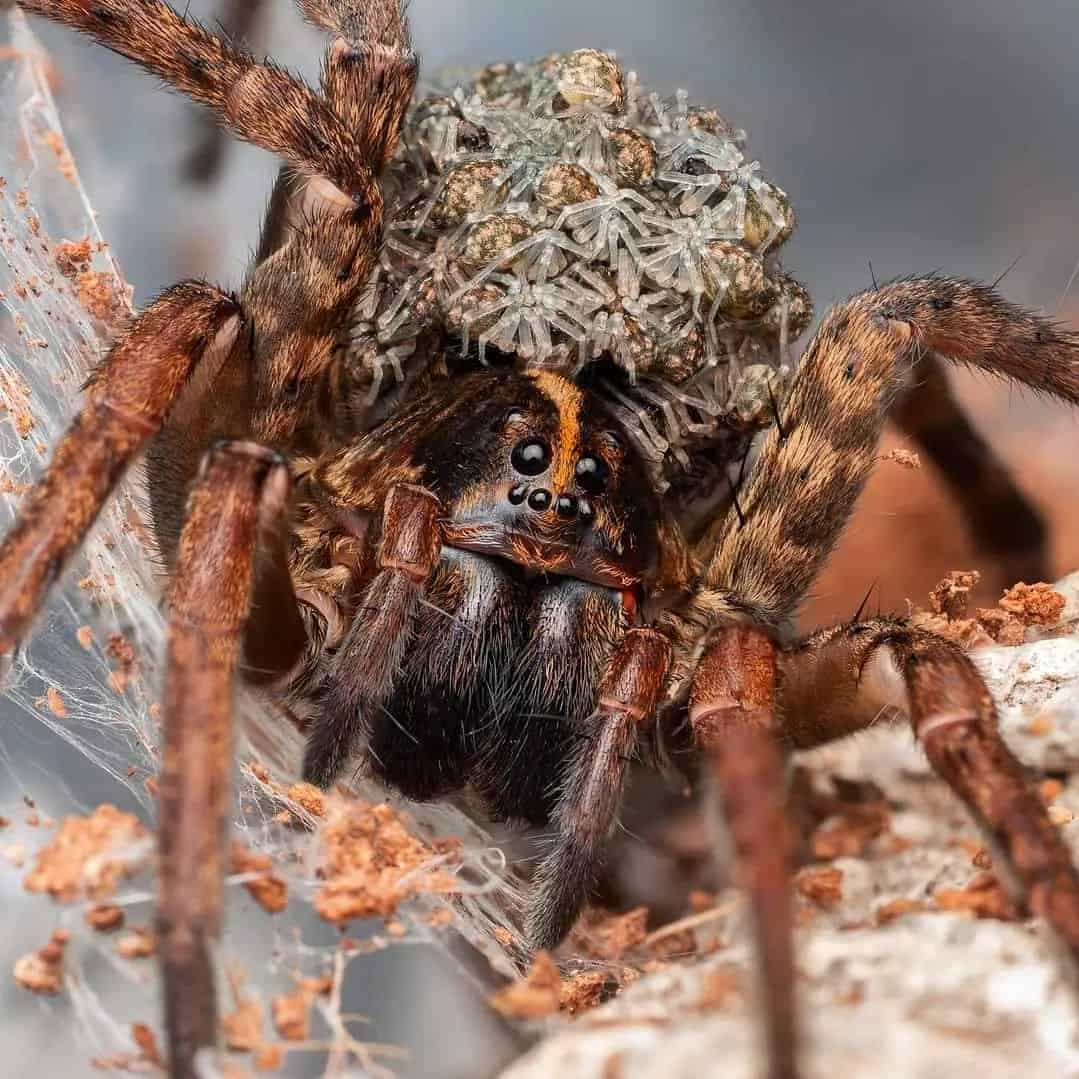A variety of enigmatic animals take to the sky as the sun sets and twilight descends. While nocturnal birds get active and soar through the twilight sky to prey, bats emerge from their roosts.
Here’s the short response in case you’re pressed for time: Although nocturnal birds and bats also fly at dusk, bats have evolved specifically to be more active in low light.
We’ll look carefully at the ways that bats and birds that fly at dusk vary in this extensive guide, including eyesight, wing structure, flying patterns, navigational skills, eating habits, and more.
Adaptations of Vision in Low Light
Both bats and birds have developed amazing eyesight adaptations to help them rule the night sky when it comes to low-light navigation. These characteristics enable them to communicate with other members of their species, avoid obstacles, and seek for food.
Bats: Echolocation Experts
Bats are able to travel and detect items in total darkness thanks to an amazing talent called echolocation. They make high-frequency noises and observe the echoes that return after striking nearby objects.
Bats can fly with unmatched accuracy because they are able to decipher these echoes and use them to build a thorough mental picture of their environment.
Even in total darkness, bats can detect things as small as a human hair because to their very accurate echolocation. since of this adaption, they have a considerable advantage while hunting insects since they can find and catch their prey quite accurately.
Birds: Better Vision at Night
Despite not being able to echolocate as bats do, birds have developed a unique set of adaptations for living in low light. Their increased number of rod cells in the retina allows them to see better in low light, which is one important adaptation.
Specialized photoreceptor cells called rod cells are in charge of detecting motion and light.
The tapetum lucidum, a reflective layer located beneath the retina in some bird species, is another feature. By reflecting light back through the retina, this layer essentially gives the photoreceptor cells another opportunity to perceive light.
Their ability to see better in low light conditions and at night is improved by this adaption.
Bats have an advantage when it comes to hunting and navigating in total darkness because of their special echolocation adaption, as the chart demonstrates. Conversely, birds can see better in low light due to their superior night vision and the existence of the tapetum lucidum.
Observing how birds and bats have developed distinct adaptations to thrive in the night sky is intriguing. The remarkable variety and creativity present in the natural world are emphasized by these adaptations.
Visit the following websites to learn more about how birds and bats have adapted their vision:
Wing Configurations Optimal for Night Operations
Due to their distinct wing structures, both birds and bats are able to hunt and navigate in the dark. Their success and survival in the night sky depend on these modifications.
Bats: The Ultimate Adaptability Experts
When it comes to maneuverability in flying, bats have an obvious advantage because of their membrane-covered wings. Because their wings are flexible, they can alter their form while in flight, which enables them to descend suddenly and make tight bends to capture insects.
The patagium, the flexible skin that lies between the extended fingers, provides the required surface area for lift and control. Because of this amazing adaption, bats are able to move through crowded areas like thick woods, when birds would find it difficult to do so.
Birds: Designed for Power and Stealth
In contrast to bats, birds have feathers that give their wings more rigidity. During rapid and prolonged flight, their stiffness aids in producing lift and preserving stability. The general structure and function of bird wings are influenced by the many feather types, such as primary and secondary feathers.
Birds can fly over great distances and maintain consistent flight patterns because they too possess a pectoral muscle. Because of their versatility, birds are the best animals for lengthy flights and migrations—something that bats are not usually good at.
Patterns of Flight and Adaptability
Both birds and bats exhibit remarkable flying patterns and dexterity that enable them to effortlessly traverse the night sky. These two species do, however, have some significant distinctions that set their flying patterns apart.
Patterns of Bird Flight
Birds are recognized for their elegant and efficient flying patterns. They use their strong wings to soar through the air, usually flying in a straight path. Moreover, birds have the ability to hover still, which gives them the ability to forage for food or sit on trees.
Predator birds like eagles and hawks are well-known for their aerial acrobatics, which demonstrate their flying patterns. These birds are skilled hunters in the skies because of their extraordinary speed and agility.
Patterns of Bat Flight
In contrast, the flying path of bats is more unpredictable than that of birds. They are deft fliers that can easily maneuver through confined places and change direction swiftly. In addition to their ability to fly straight, bats also possess exceptional skills in zigzag flight and fast twists.
The amazing ability of bats to use echolocation to fly in total darkness is one of their many talents. To find items and navigate their environment, they release high-frequency noises and listen for the echoes.
Bats have an edge over birds because of their special ability to fly and hunt in the dark.
In contrast
Because they can fly in more confined places and change direction fast, bats are somewhat more maneuverable than birds. When it comes to flying speed and aerial acrobatics, birds are unique.
It’s crucial to remember that various bat and bird species might have distinct flight patterns and levels of agility.
Researchers from the University of Bristol discovered that certain bat species are among the fastest flying animals on Earth, with top speeds of 99 miles per hour (160 kilometers per hour). The record for the fastest bird in level flight, however, belongs to the peregrine falcon, a species renowned for its extraordinary speed, which can reach up to 240 miles per hour (386 kilometers per hour).
Studying the behavior, ecology, and conservation of birds and bats requires an understanding of their flying patterns and agility. Scientists may learn a great deal about these amazing animals and contribute to the preservation of their habitats by solving the riddles surrounding their flight.
You may visit the Bat Conservation International website at https://batcon.org/ to learn more about bat flying patterns. The Cornell Lab of Ornithology website, located at https://www.birds.cornell.edu/, offers a plethora of resources for learning about bird flight patterns.
Finding Your Way and Hunting
Birds and bats have both evolved special adaptations to help them hunt and travel in the dark. To do this, they use various tactics, however.
Bats
The remarkable echolocation skills of bats are well known; these skills enable them to find and travel in total darkness in search of food. These amazing animals produce high-frequency noises that reverberate off nearby objects.
Bats are able to construct an intricate mental map of their environment by listening to the echoes, which helps them avoid obstacles and catch flying insects with remarkable accuracy. Some bats have been shown by researchers to be able to make up to 200 sounds per second and to be able to detect tiny prey—like mosquitoes—from a distance of several meters.
Because of how sophisticated bat echolocation is, scientists have been motivated to create new technology, including sonar systems and even methods for medical imaging. Bats are very adaptable and intelligent, as shown by their extraordinary accuracy in echolocation.
Birds
For navigation and hunting at dusk, birds mostly depend on their keen eyesight, unlike bats. Their eyes are uniquely suited to detect even the smallest amounts of light, which enables them to find and track prey and sense movement.
Some bird species have larger eyes than others, like owls, in order to enhance their night vision.
Birds have keen hearing in addition to excellent eyesight, which aids in their ability to find food and evade any predators. For example, several species of owls have asymmetrical ear openings that enable them to locate sounds precisely even in total darkness.
Even though they may not have bat-like echolocation, birds have developed various adaptations to survive in the night sky.
Comparing Birds and Bats
Bats and birds alike have developed incredible abilities to hunt and navigate in the dark. Birds use their superior eyesight and hearing to find prey, whereas bats use echolocation to map their environment mentally.
Every species has its adaptations, demonstrating the extraordinary range of ways that nature has dealt with the problems that face us.
For further information about bat echolocation and its uses, go to the Smithsonian Magazine website, which offers comprehensive coverage of the topic.
Feeding Patterns in Evening
Bats and birds alike take to the skies as nightfall draws in quest of food. Their eating habits, however, are quite different. Let’s examine how these animals search for food in the night sky in more detail.
Bats: Experts at Finding Echoes
Bats are renowned for having remarkable echolocation skills. Through a sequence of high-pitched noises, they release ultrasonic waves that reverberate off nearby objects. Bats can identify the location, size, and even texture of their prey by examining the echoes that bounce back to them.
They have a considerable edge over birds when it comes to seeking food after nightfall because of the special adaption that allows them to forage in total darkness.
Birds: Eye Focus in Dim Light
For the most part, birds use their keen vision to locate food, unlike bats. Birds with excellent night vision, like owls, have an edge when the sun sets and light levels drop. Their big eyes are designed to take in as much light as possible, which enables them to see prospective prey and detect movement in poor light.
Certain bird species, like nightjars, have unique feathers that enable them to blend in with their environment and almost disappear to predators and prey.
Were you aware? Certain bat species can eat up to 1,000 insects in a single hour, which makes them useful partners in the management of pest populations.
Birds and bats are essential to preserving the fragile environmental balance. Comprehending their eating habits during twilight enhances our understanding of the complex network of life in the night sky.
Thus, the next time you see these animals in action, stop and be amazed by their incredible skills.
Final Thoughts
Even though nocturnal birds and bats coexist in the evening sky, bats have special evolutionary traits that provide them an advantage in low light. Fascinating insights into the eyesight, flying ability, and feeding habits of bats and birds may be gained by comparing them after dusk.







One thought on “Bats Vs Birds At Dusk: Who has ownership of the night sky?”